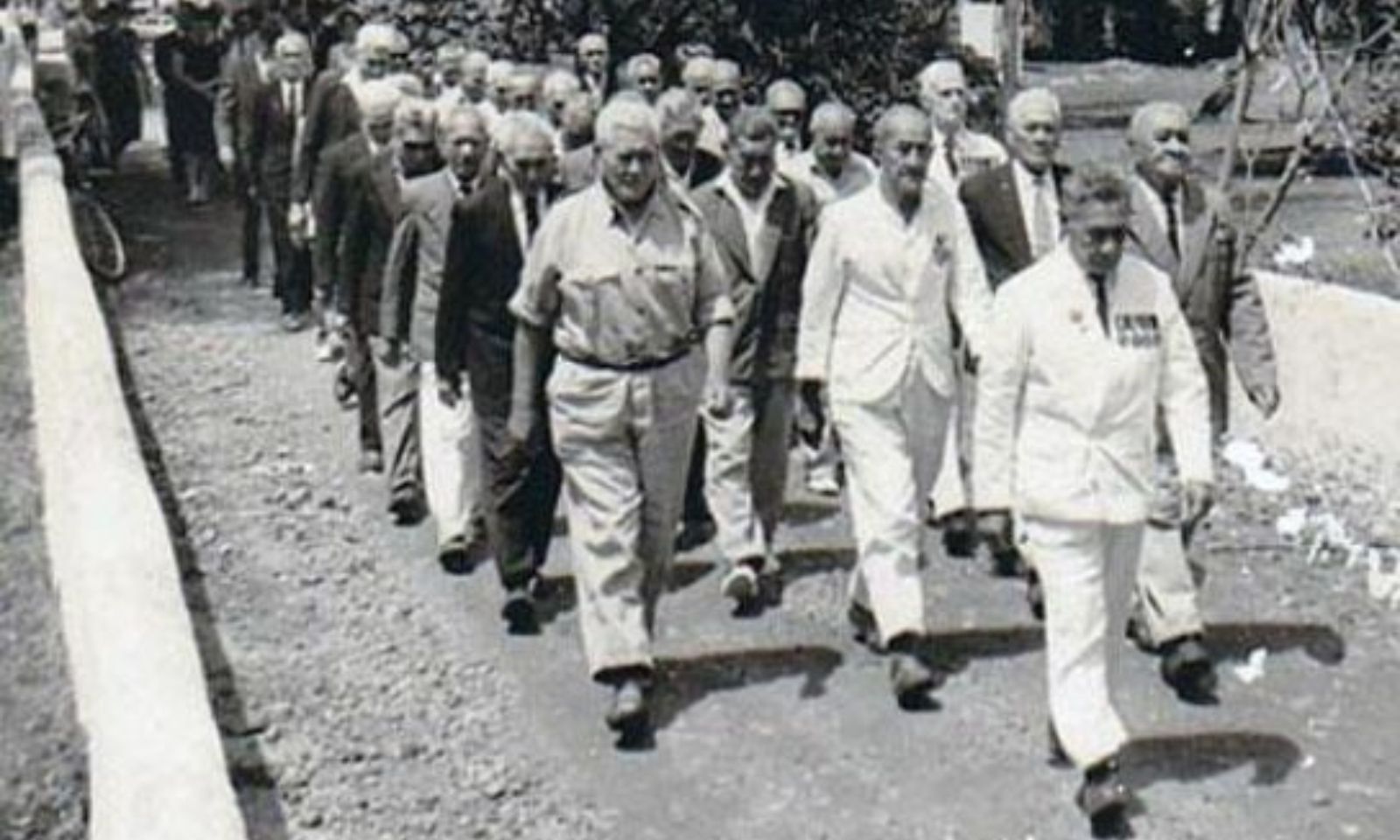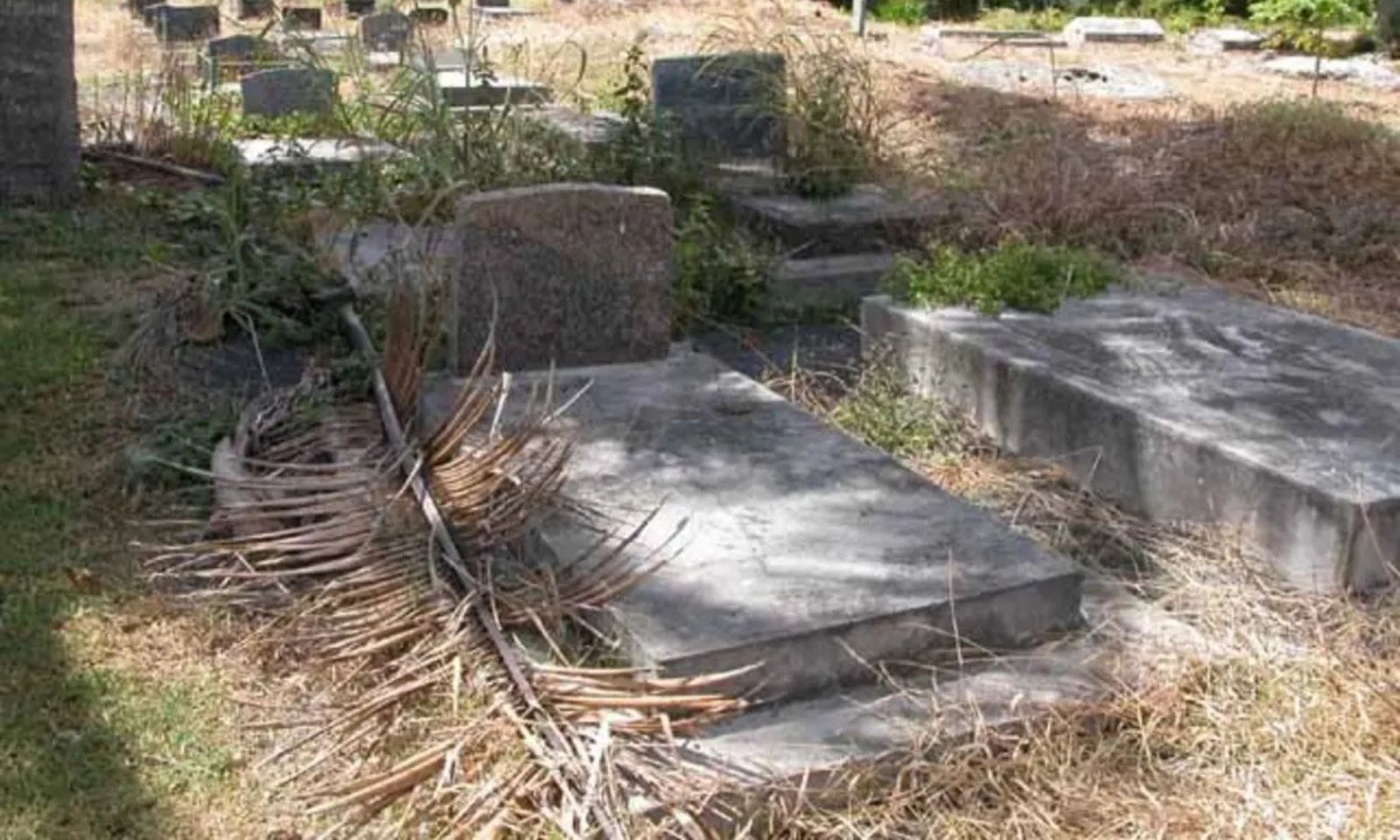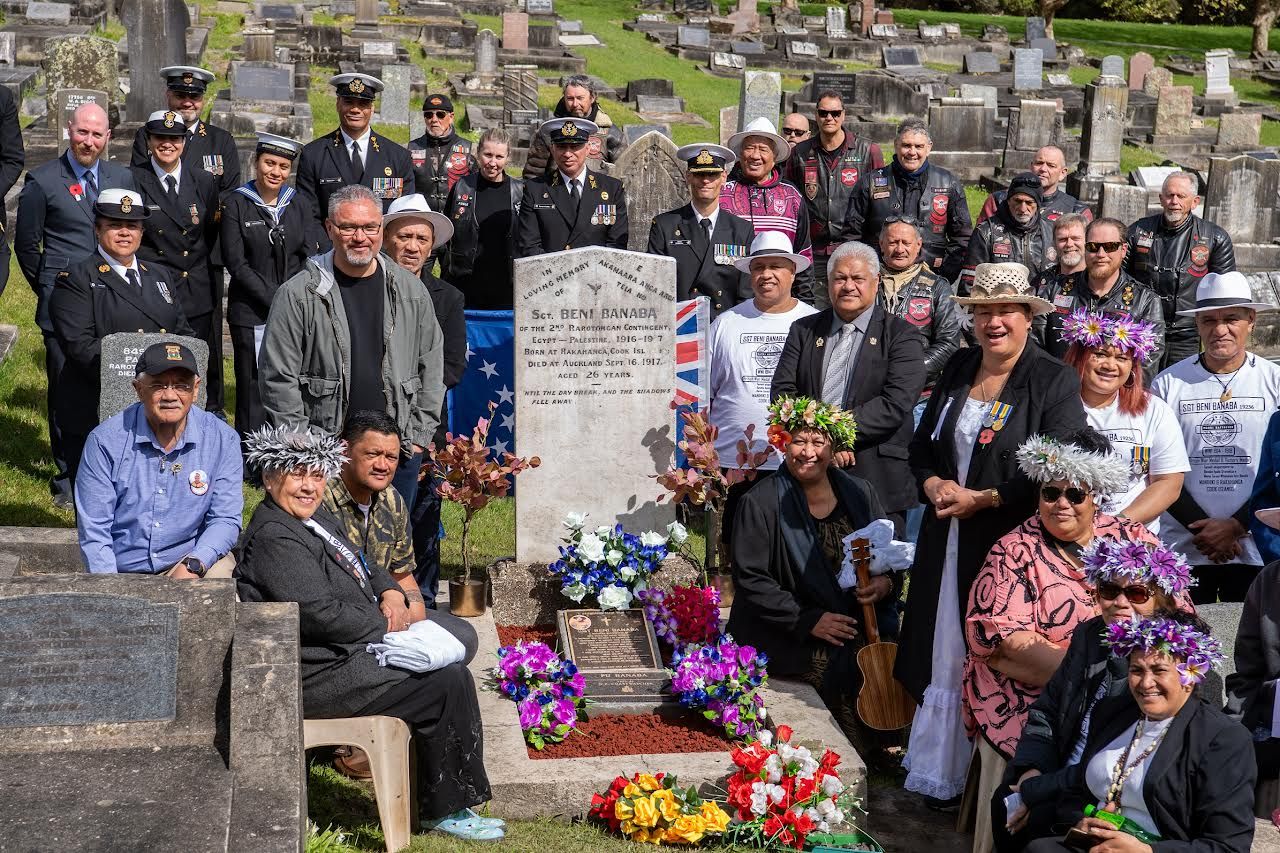

Cook Islands Local Defence Force soldiers during the war. Families of 85 veterans can now apply for medals recognising the men's service and sacrifice.
Photo/Weekly Review/Cook Islands Online Cenotaph
Cook Islands wartime veterans finally get long overdue recognition
Families of the 85 soldiers, who served in the local defence force during WWII, can now apply for the medals they missed out on decades ago.


Heaven is real, Hell isn’t: My spiritual journey through ego, love and seeking out peace




Heaven is real, Hell isn’t: My spiritual journey through ego, love and seeking out peace


For decades, the bravery of Cook Islands soldiers who defended their homeland during World War II was largely overlooked.
Now, after more than 80 years, 85 veterans or their families are finally eligible to receive the medals they earned - an honour that many thought would never come.
The New Zealand Defence Force (NZDF) confirmed the decision following a review of historic medal criteria for the Cook Islands Local Defence Force (CILDF), a unit formed in April 1941 to protect the islands as war swept across the Pacific.
The CILDF was demobilised in 1943 and reverted to a Territorial Force, but while many soldiers received their medals in the 1950s, others were denied recognition because they were discharged before the war ended, sometimes for minor disciplinary issues.
John McLeod, director of Heritage, Commemorations and Protocol at the NZDF, says the organisation reassessed how medals were issued to CILDF members compared with soldiers in the Second New Zealand Expeditionary Force (NZEF).
“After comparing the medal process for the CILDF with the NZEF, we decided to issue the medals to these veterans or their next of kin,” McLeod says.

Cook Islands war veterans during ANZAC Day parade. Photo/CILDF
“This recognition is long overdue. These men and women served their country at a critical time, and it is right that we honour their contribution.
“In modern times, family members of New Zealand servicemen have also received medals regardless of offences that may have justified dismissal at the time."
Eligible veterans or relatives can now apply for the War Medal 1939–1945, the New Zealand War Service Medal, and, for those who served 18 months or more, the Defence Medal.
Only one set of medals will be issued per family, and they must agree among themselves who will apply. Surviving members or next of kin can request forms by emailing NZDF.PAM@nzdf.mil.nz.
“This will help put right a situation that has persisted since the end of the war,” McLeod says. “These men and women served at a critical time, and it is right that we honour their contribution.”
The shift in recognition comes after years of research by volunteers dedicated to documenting the contributions of Cook Islands soldiers.
Among them are researchers Cate Walker and Bobby Nicholas, who helped identify more than 80 CILDF veterans who qualify for the newly accessible medals.
Walker and Nicholas were part of the team behind the Cook Islands Online Cenotaph, a digital project that maps and documents the graves of Cook Islands soldiers who served in World War I.
The initiative, the Cook Islands WWI NZEF ANZAC Soldiers Research Project, began with locating and photographing graves across Rarotonga, Aitutaki, Mangaia, Atiu and Mauke.

Reserchers Bobby Nicholas, second from left, and Cate Walker, middle, with other volunteers at the Nikao Cemetery in Rarotonga. Photo/cookislandsonlinecenotaph.com
The team has since recorded over 300 WWI graves, including GPS coordinates to help families find ancestors’ resting places with ease.
“The Cook Islands Online Cenotaph is another step in creating an independent identity and shows the world the huge contribution a small Pacific Islands nation has made toward world peace,” Walker says.
“We created the website to share our research freely with Cook Islands families. It’s done voluntarily, for the people and with the help of the people.”
The website has expanded to include Cook Islanders who served in WWII and even European service personnel with Cook Islands connections. Members of the public are encouraged to contribute stories or photographs through the site’s contact page.

Overgrown graves at Nikao Cemetery in Rarotonga in 2003. Photo/Cate Walker
Families finally see justice
The renewed attention to Cook Islands service follows another milestone in 2023, when New Zealand formally acknowledged the Cook Islands coastwatchers - radio operators who monitored the Pacific during WWII but were long left unrecognised.
A service plaque honouring radio operator Pu Banaba was unveiled at O’Neill’s Point Cemetery in Auckland, the first such recognition for a Cook Islands coastwatcher.
Banaba’s grand-niece, Theresa Tarani Greig, travelled from Australia for the ceremony.
“It was the proudest moment ever,” Greig told the gathering. “We’re thankful the New Zealand Defence Force, Navy and veterans came to show respect. It's a great honour for our family.”
For relatives of other coastwatchers, the moment signalled long-awaited validation.
Willie Cuther, whose grandfather received the first coastwatcher plaque in the Cook Islands in 2022, says the recognition “brings justice to our families” and acknowledges sacrifices that were too long ignored.

Family members, dignitaries from the Cook Islands Government, and representatives of the New Zealand Defence Force took part in the unveiling of the first Cook Islands coastwatchers plaque in New Zealand in 2022. Photo/NZDF
Why Cook Islands served under NZ during WWI
Cook Islands soldiers served under the NZEF during World War I and II because the islands were administered by New Zealand at the time.
More than 500 Cook Islanders served in WWI, many with the Rarotongan Company in Egypt, Sinai and Palestine. At least 48 never returned home.
Their service, often overshadowed in official histories, is increasingly being documented through projects like the Online Cenotaph and through families sharing their stories.
Watch Cate Walker's interview on CITV about the Cook Islands Online Cenotaph below.